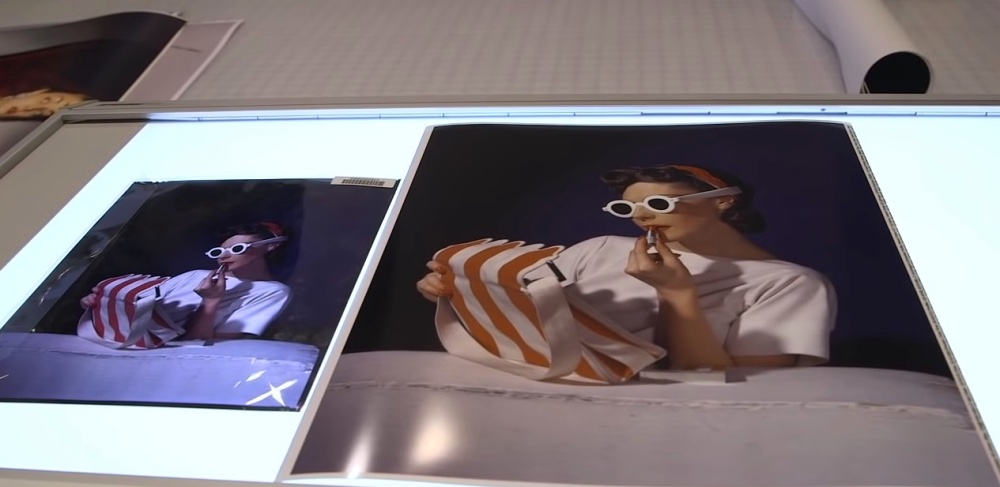A master.
One of the pleasant outcomes of the V&A’s Horst show was the scanning and printing of his colour transparencies.
Introduced in 1935, and much improved shortly thereafter, Kodak made Kodachrome slide film in sizes up to 11″ x 14″. Horst opted for 8″ x 10″ and the Vogue magazine archive of his slides holds many originals never before printed.

Click the image for the video.
The video explains that high quality drum scans of these originals preserved all the detail and dynamic range, something only recently improved upon by large format digital imaging. However, the vaunted curators really need to go back to curator school. Early in the video you see old copies of the magazine handled with cotton gloves. All well and good. Now jump to 4:22. Yup. Those fish and chip greased up fingers are used to manhandle the priceless originals. Let’s hope those drum scans are well backed up because the originals are not going to make it at this rate.
One of the key points the video illustrates is that Horst, during his 60 year career at Vogue, made the transition from monochrome to colour seamlessly, unlike many others. (Ever seen an HC-B colour snap? Ugh!). Horst’s classical, static compositions, using simple sets, helped but this master excelled at everything photographic. The video is well worth watching, especially if this is your first introduction to Horst’s work.